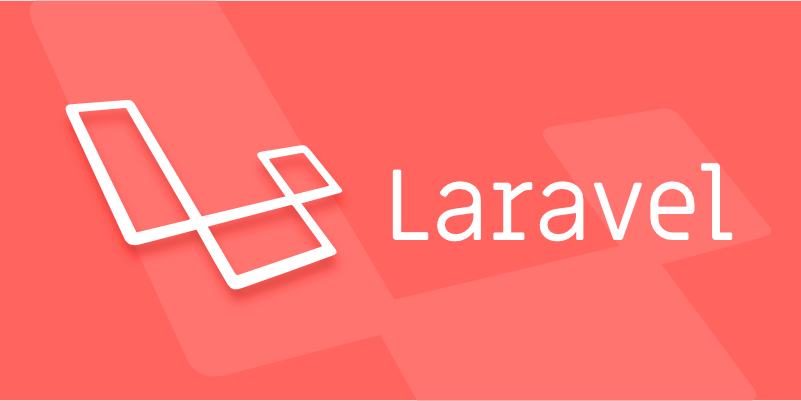Customizing Error Handling and Exception Reporting in Laravel
Jul 05, 2025 am 12:52 AMLaravel provides flexible error handling mechanisms to improve application robustness through custom exception handlers. 1. Modify the render method in the default exception handler App\Exceptions\Handler to realize the unified JSON error format for API requests; 2. Create a custom exception class (such as OrderPaymentFailedException), throw it in business logic and handle it in Handler, to enhance code clarity and scalability; 3. Configure log drivers and integrate Sentry and other third-party monitoring services to report production environment errors in real time, facilitate quick positioning of problems; 4. Pay attention to testing exception responses, avoid leaking sensitive information, and distinguish HTTP from other exception types to ensure processing accuracy.

Laravel provides a very flexible error handling and exception reporting mechanism. Through reasonable customization, your application can provide more clearly feedback on problems when errors occur, and facilitate subsequent troubleshooting. Here are some practical practices for developers who want to improve project robustness and maintainability.

Modify the default exception handler
Laravel uses App\Exceptions\Handler to handle all exceptions by default. You can rewrite render or report method in this class to achieve personalized processing of different exceptions.

For example, you want all API requests to return JSON error messages in a unified format instead of the default HTML page:
use Illuminate\Auth\AuthenticationException;
use Illuminate\Http\Exceptions\HttpResponseException;
public function render($request, Throwable $exception)
{
if ($request->expectsJson()) {
return response()->json([
'error' => $exception->getMessage(),
], $this->isHttpException($exception) ? $exception->getStatusCode() : 500);
}
return parent::render($request, $exception);
}In this way, when an exception occurs in an interface call, the response can be maintained and it is easier to be recognized and processed by the front-end.

Custom exception types and handling logic
If you have some specific error types in business logic (such as order payment failure, inadequate inventory, etc.), you can better organize your code by customizing exception classes.
The steps are as follows:
- Create your own exception class, inherit
\Exception - Identify these exceptions in the
rendermethod ofHandlerand perform special processing
For example:
php artisan make:exception OrderPaymentFailedException
Then throw this exception in your business logic:
throw new OrderPaymentFailedException('Payment failed, please try again');
Then go to App\Exceptions\Handler to process it:
use App\Exceptions\OrderPaymentFailedException;
public function render($request, Throwable $exception)
{
if ($exception instance of OrderPaymentFailedException) {
return response()->json([
'error' => 'Order Error',
'message' => $exception->getMessage()
], 400);
}
return parent::render($request, $exception);
}The advantage of this is that it is clear logic and facilitates future expansion or centralized processing of certain types of errors.
Integrated log and third-party exception monitoring services
In addition to returning friendly error messages, it is also important to record detailed error logs. Laravel supports a variety of log drivers (such as daily, syslog, errorlog, etc.), and you can set it in the .env file:
LOG_CHANNEL=stack LOG_LEVEL=debug
In addition, it is recommended to report serious errors to third-party platforms, such as Sentry, Bugsnag, etc. Take Sentry as an example:
- Installation package:
composer require sentry/sentry-laravel - Publish configuration:
php artisan vendor:publish --provider="Sentry\Laravel\ServiceProvider" - Set DSN to
.env:SENTRY_LARAVEL_DSN=https://your-key@oorg.ingest.sentry.io/project - Laravel will automatically capture and report unhandled exceptions
This method is particularly suitable for production environments and can detect and locate online problems as soon as possible.
Pay attention to small details
- Test whether the exception is effective : You can temporarily throw an exception in the controller and access the corresponding interface to see if the return format meets expectations.
- Do not expose sensitive information : In production environment, make sure
APP_DEBUG=falseis used to avoid leaking stack information. - HTTP exception vs Other exceptions : Some exceptions (such as 404, 403) belong to HTTP exceptions. You can use
$this->isHttpException()to distinguish them and return the corresponding HTTP status code.
Basically that's it. Rational customization of error handling can not only improve the user experience, but also help you discover problems faster during development and operation and maintenance.
The above is the detailed content of Customizing Error Handling and Exception Reporting in Laravel. For more information, please follow other related articles on the PHP Chinese website!

Hot AI Tools

Undress AI Tool
Undress images for free

Undresser.AI Undress
AI-powered app for creating realistic nude photos

AI Clothes Remover
Online AI tool for removing clothes from photos.

Clothoff.io
AI clothes remover

Video Face Swap
Swap faces in any video effortlessly with our completely free AI face swap tool!

Hot Article

Hot Tools

Notepad++7.3.1
Easy-to-use and free code editor

SublimeText3 Chinese version
Chinese version, very easy to use

Zend Studio 13.0.1
Powerful PHP integrated development environment

Dreamweaver CS6
Visual web development tools

SublimeText3 Mac version
God-level code editing software (SublimeText3)

Hot Topics
 What are routes in Laravel, and how are they defined?
Jun 12, 2025 pm 08:21 PM
What are routes in Laravel, and how are they defined?
Jun 12, 2025 pm 08:21 PM
In Laravel, routing is the entry point of the application that defines the response logic when a client requests a specific URI. The route maps the URL to the corresponding processing code, which usually contains HTTP methods, URIs, and actions (closures or controller methods). 1. Basic structure of route definition: bind requests using Route::verb('/uri',action); 2. Supports multiple HTTP verbs such as GET, POST, PUT, etc.; 3. Dynamic parameters can be defined through {param} and data can be passed; 4. Routes can be named to generate URLs or redirects; 5. Use grouping functions to uniformly add prefixes, middleware and other sharing settings; 6. Routing files are divided into web.php, ap according to their purpose
 What are policies in Laravel, and how are they used?
Jun 21, 2025 am 12:21 AM
What are policies in Laravel, and how are they used?
Jun 21, 2025 am 12:21 AM
InLaravel,policiesorganizeauthorizationlogicformodelactions.1.Policiesareclasseswithmethodslikeview,create,update,anddeletethatreturntrueorfalsebasedonuserpermissions.2.Toregisterapolicy,mapthemodeltoitspolicyinthe$policiesarrayofAuthServiceProvider.
 How do I create new records in the database using Eloquent?
Jun 14, 2025 am 12:34 AM
How do I create new records in the database using Eloquent?
Jun 14, 2025 am 12:34 AM
To create new records in the database using Eloquent, there are four main methods: 1. Use the create method to quickly create records by passing in the attribute array, such as User::create(['name'=>'JohnDoe','email'=>'john@example.com']); 2. Use the save method to manually instantiate the model and assign values ??to save one by one, which is suitable for scenarios where conditional assignment or extra logic is required; 3. Use firstOrCreate to find or create records based on search conditions to avoid duplicate data; 4. Use updateOrCreate to find records and update, if not, create them, which is suitable for processing imported data, etc., which may be repetitive.
 How do I run seeders in Laravel? (php artisan db:seed)
Jun 12, 2025 pm 06:01 PM
How do I run seeders in Laravel? (php artisan db:seed)
Jun 12, 2025 pm 06:01 PM
Thephpartisandb:seedcommandinLaravelisusedtopopulatethedatabasewithtestordefaultdata.1.Itexecutestherun()methodinseederclasseslocatedin/database/seeders.2.Developerscanrunallseeders,aspecificseederusing--class,ortruncatetablesbeforeseedingwith--trunc
 What is the purpose of the artisan command-line tool in Laravel?
Jun 13, 2025 am 11:17 AM
What is the purpose of the artisan command-line tool in Laravel?
Jun 13, 2025 am 11:17 AM
Artisan is a command line tool of Laravel to improve development efficiency. Its core functions include: 1. Generate code structures, such as controllers, models, etc., and automatically create files through make: controller and other commands; 2. Manage database migration and fill, use migrate to run migration, and db:seed to fill data; 3. Support custom commands, such as make:command creation command class to implement business logic encapsulation; 4. Provide debugging and environment management functions, such as key:generate to generate keys, and serve to start the development server. Proficiency in using Artisan can significantly improve Laravel development efficiency.
 How do I install Laravel on my operating system (Windows, macOS, Linux)?
Jun 19, 2025 am 12:31 AM
How do I install Laravel on my operating system (Windows, macOS, Linux)?
Jun 19, 2025 am 12:31 AM
Yes,youcaninstallLaravelonanyoperatingsystembyfollowingthesesteps:1.InstallPHPandrequiredextensionslikembstring,openssl,andxmlusingtoolslikeXAMPPonWindows,HomebrewonmacOS,oraptonLinux;2.InstallComposer,usinganinstalleronWindowsorterminalcommandsonmac
 How do I define methods (actions) in a controller?
Jun 14, 2025 am 12:38 AM
How do I define methods (actions) in a controller?
Jun 14, 2025 am 12:38 AM
Defining a method (also known as an action) in a controller is to tell the application what to do when someone visits a specific URL. These methods usually process requests, process data, and return responses such as HTML pages or JSON. Understanding the basic structure: Most web frameworks (such as RubyonRails, Laravel, or SpringMVC) use controllers to group related operations. Methods within each controller usually correspond to a route, i.e. the URL path that someone can access. For example, there may be the following methods in PostsController: 1.index() – display post list; 2.show() – display individual posts; 3.create() – handle creating new posts; 4.u
 How do I run tests in Laravel? (php artisan test)
Jun 13, 2025 am 12:02 AM
How do I run tests in Laravel? (php artisan test)
Jun 13, 2025 am 12:02 AM
ToruntestsinLaraveleffectively,usethephpartisantestcommandwhichsimplifiesPHPUnitusage.1.Setupa.env.testingfileandconfigurephpunit.xmltouseatestdatabaselikeSQLite.2.Generatetestfilesusingphpartisanmake:test,using--unitforunittests.3.Writetestswithmeth






